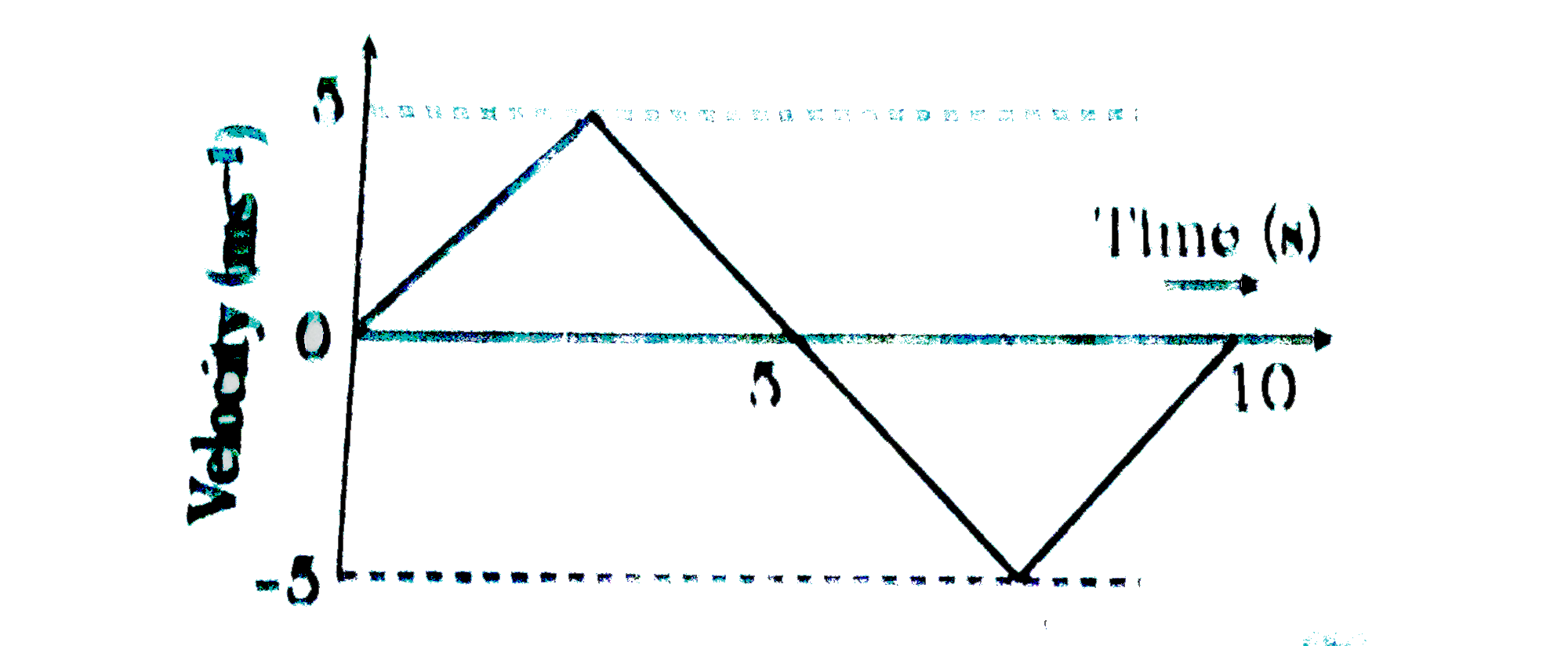The angular displacement of the blades of a ceiling fan, when the fan is switched on at t=0, is shown in figure. The average angular velocity of the fan blades during the first 8 seconds will be

The correct Answer is:C
Topper's Solved these Questions
- TEST PAPERSBOOK - ALLENCHAPTER - TEST PAPERSEXERCISE - PAPER 2
60 Videos
- TEST PAPERSBOOK - ALLENCHAPTER - TEST PAPERSEXERCISE - PAPER 3
99 Videos
- TEST PAPER 4BOOK - ALLENCHAPTER - TEST PAPER 4EXERCISE - PHYSICS
44 Videos
- UNIT & DIMENSIONS, BASIC MATHS AND VECTOR BOOK - ALLENCHAPTER - UNIT & DIMENSIONS, BASIC MATHS AND VECTOR EXERCISE - Exercise (J-A)
7 Videos
Similar Questions
The v-t plot of a moving object ios shown in the figure. The average velocity of the object during the first 10 s is

View SolutionThe velocity-time graph of a car moving along a straight road is shown in figure. The average velocity of the car in first 25 seconds is

View SolutionThe velocity-time graph of a car moving along a straight road is shown in figure. The average velocity of the car is first 25 seconds is

View SolutionThe current I through a conductor varies with time t as shown in figure. The average electric current during t=0 to t=10 s will be

View SolutionFor the displacement-time graph shown in figure, the ratio of the magnitudes of the speeds during the first two second and the next four second is

View SolutionAs shown in the figure, a disc of mass m is rolling without slipping with angular velocity ω. When it crosses point B disc will be in

View SolutionFigure shows x-t graph of a particle. Find the Time T such that the average velocity of the particle during the period 0 to T is Zero.

View SolutionTen seconds after an electric fan is turned on, the fan rotates at 300 rev/min. Its average angular acceleration is
View Solutionwhen a ceiling fan is switched on it makes 10 revolutions in the first 4 second. assuming a uniform angular acceleration, how many revolution it will makes in the next 4 seconds?
View SolutionWhen a ceiling fan is switched on, it makes 10 rotations in the first 3 seconds. Assuming a uniform angular acceleration, how many rotation it will make in the next 3 seconds?
View Solution
